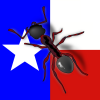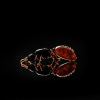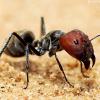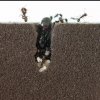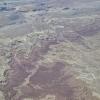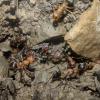Scientific Name: Pseudomyrmex pallidus
Common Name: Elongate twig ants, dry twig ants.
Distribution: Southwest, and Southern United States, as well as spread across Central America
Queen size: 3.5-4.5mm
Worker size: 2.8-3.5mm
Natural Habitat: Hollowed out twigs/sticks
Circadian Activity: Diurnal, comes out at night when the colony is larger
Mating Flight: Mate all throughout the summer, similar to argentine ants they mate either in or just outside their nest and return to it after mating. After a while queens will wander off to start new nest with a couple of workers.
Queen Founding Method: Semi-claustral, queens spread from main colony with a group of workers and sometimes brood.
Monogyne or Polygyne: Polygyne, this species accepts hundreds of queens and produces more throughout the summer.
Average time from egg to worker: Egg to Larvae = 3 days; Larvae to pupae = 20-25 days, Pupae to worker = 4 days. Colonies grow slow for the first year and a half.
Recommended Temperature: Keep at 23C during summer and 20C during winter, develops faster without hibernation, which tends to drastically slow production rates.
Recommended Humidity: Appreciates a source of water but keep most of nest relatively dry
Preferred Foods: Dubia Roaches, Fruit, watered down honey
Hibernation Details: No hibernation necessary. The queens still lay's during the winter.
Escape Barrier Methods: Talcum powder, baby powder and isopropanol alcohol, or Fluon/PTFE.
Difficulty rating: Very picky and likes to nest in tight spaces. 6/10, rather difficult to keep
Bite and/or Sting rating: Very painful sting ¾ om the insect sting pain index. Very rare for them to actually sting though.
Special Care or Interesting Notes: Only eats roaches and fruit, does not like most formicariums. Sometimes nests in test tubes. Supply with sticks and/or cotton swabs cut in half for them to nest in. Very little information available online because it has been documented very little. Museum data does not accurately represent distribution.
Additional Links:
https://www.antweb.o...us&rank=species
Information submitted by AntHUB
Edited by dspdrew, March 5 2022 - 8:24 PM.






